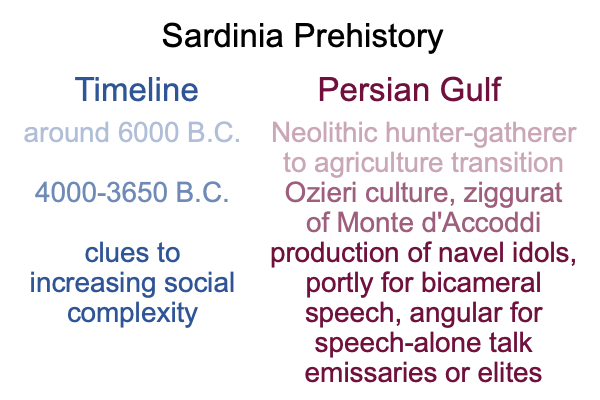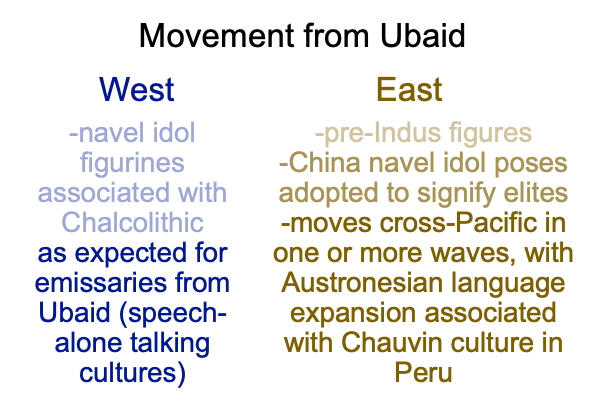0030 To the immediate west of Mesopotamia, the navel idols of Israel, dating to 4500-3500 B.C., look like they correspond to the first message. The Canaanite coffins of 1300-1200 B.C. look as if they are inspired by the latter message. The coffins do not contain emissaries from Mesopotamia, they contain Canaanite elites who benefitted from trends towards unconstrained social complexity.
0031 In Sardinia, the messages separate into more than one style of navel icon..

0032 Here, this examiner leaves the reader to use the speculative structure of two messages to appreciate the many navel icons that the author presents in this well-appointed art-book.
To me, the overall picture is clear for the West and for the East (as far as Eurasia is concerned).
The navel icons, as well as their speech-alone talking emissaries, are next involved in establishing a foothold in South America, but the messages are confounded with a trend already occurring in China. The same pose and adornment of the original navel icons are adopted as indications of elite status.
0033 Here is a picture.

0033 The conclusions… er… speculations of this examiner now set forth, I wonder whether the author will agree.
Of course, in this book, the author never entertains the idea that the navel icons are associated with either the bicameral mind (message 1) or the first singularity (message 2).
However, the author hints that intentional diffusion may be a reasonable explanation. The navel icons spread at the cusps of early civilizations throughout Eurasia and the Americas. Plus, there are other novel trends associated with the spread of the navel icons. These include copper metallurgy and… well… something to do with tracking celestial bodies. Oh, I should not forget v-shaped neck adornments.
0034 My thanks to the author for gathering evidence that is obvious to the eye, yet very difficult to account for. Perhaps, this examination, based on two works by Razie Mah, may assist.
